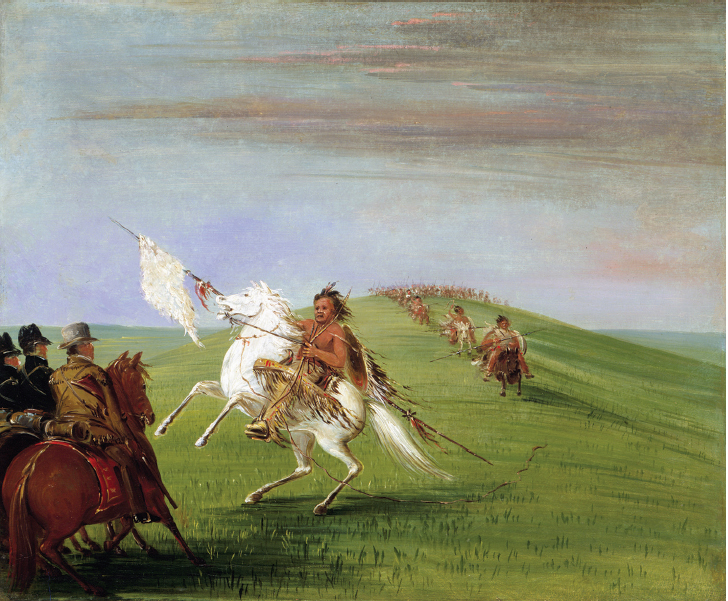America’s History: Printed Page 407
America: A Concise History: Printed Page 372
America’s History: Value Edition: Printed Page 360
Continental Empire and Cultural Conflict
 Smithsonian American Art Museum, Washington, DC/Art Resource, NY.
Smithsonian American Art Museum, Washington, DC/Art Resource, NY.
A romantic spirit of geographic expansion grew during the 1840s, prompting southerners to demand the annexation of Texas and midwesterners to favor the acquisition of Oregon. Northeastern railroad entrepreneurs championed western settlement, as did merchants eager to trade across the Pacific. The quest for western lands sparked seizure of the Mexican provinces of New Mexico and California and purchase of Russian claims to Alaska. We analyze these events in Chapter 13.
This process of expansion and state building, combined with the arrival of millions of immigrants, created new systems of racial and ethnic conflict. In the East, Irish Catholics and German-speaking migrants organized politically to protect their churches, saloons, and cultural identity, prompting a sharp reaction among native-born Protestants. In the West, the U.S. government fought wars against Cheyennes, Sioux, and Comanches on the Great Plains as it sought to integrate the region into the national economy. In the conquered Mexican territories, newly arriving whites jostled uneasily with Hispanic residents and despised Chinese immigrants. In an era of rapid economic development, western disputes often centered on access to land, jobs, and natural resources. For these conflicts, see Chapters 13 and 16.